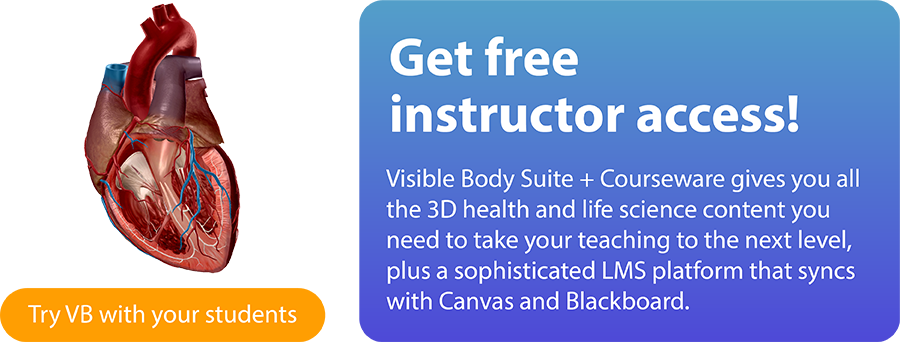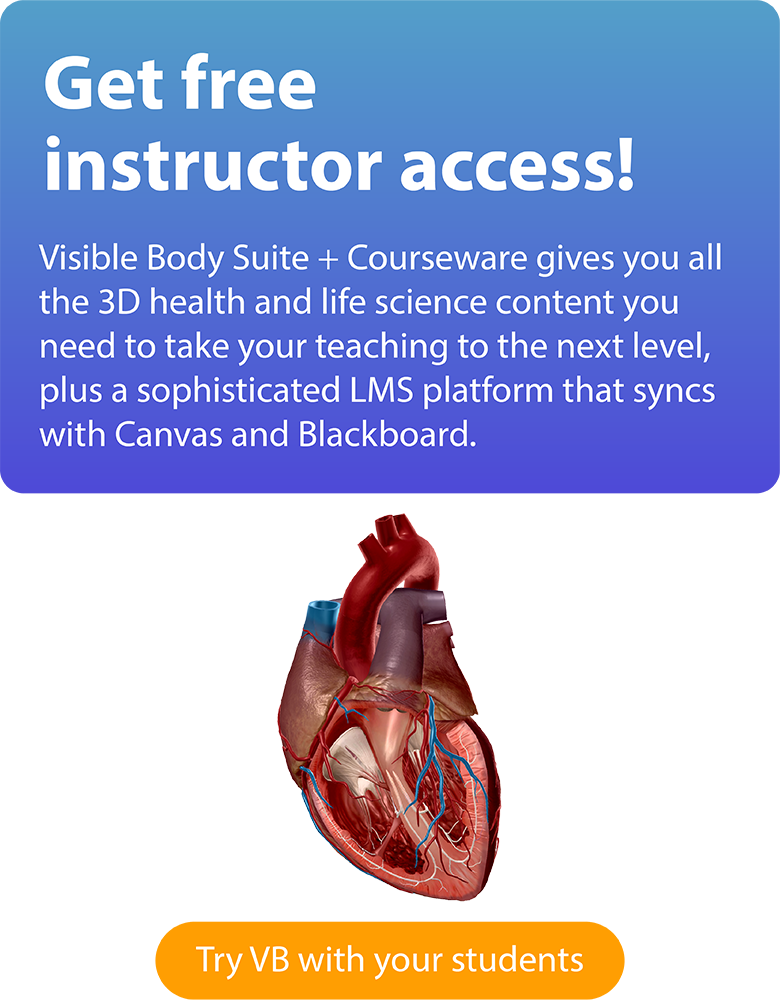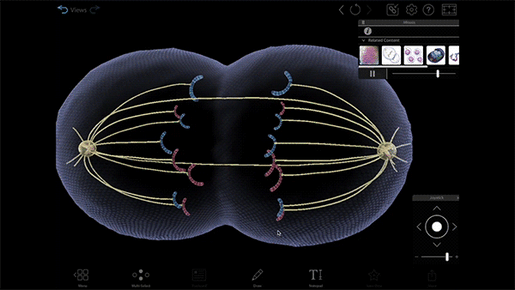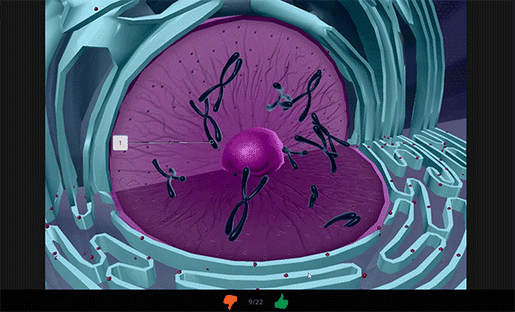Posted on 1/20/23 by Sarah Boudreau
One of the biggest challenges in teaching biology is getting students excited about things they can’t see. It’s hard to visualize abstract concepts and microscopic structures—but Visible Body supplies teachers with 3D, highly interactive tools that will give students more eureka moments. In this blog post, we’ll talk about how teachers can use those tools to fulfill state learning standards.


Visible Body Suite is best known for its library of interactive 3D models that illustrate difficult concepts in biology, anatomy, and physiology. Designed for high school students but with flexibility to be taught at the college or middle school levels, VB Suite's biology content was made to fit what teachers actually teach in their biology classes.
Standards ensure that biology classes across the United States cover similar concepts, and VB Suite was developed to teach those concepts. VB Suite's biology model library covers:

GIF from VB Suite.
In addition to these models and access to Visible Body’s award-winning suite of anatomy and physiology content, VB Suite comes with Courseware, a teaching and learning platform built for using 3D content in the classroom. Courseware can be used as a standalone LMS or can be integrated with LMS like Canvas or Blackboard. Through Courseware, students can complete assignments and can take quizzes using the 3D models.
Visible Body is dedicated to giving teachers the tools they need to get students engaged and learning, which is why we have tons of free resources, including premade Tours and Flashcards, lab activities, the Visible Biology YouTube series, and of course, all of the lesson ideas here on the blog. For now, let’s focus on lab activities.
Flashcards in VB Suite.
The labs ask students to reflect on their prior knowledge, explore the interactive structure models, label structures, connect ideas, and more. Don’t just take my word for it—take a look for yourself!
Each lab activity comes with a corresponding lesson plan document. That lesson plan contains:
Standards correlations are listed clearly on each biology lab lesson plan. We list the Next Generation Science Standards (NGSS) as well as the standards for the three largest states for education: Florida, Texas, and California.
This is a great feature for teachers who are asked to submit lesson plans to administrators ahead of time to ensure they fit standards. The work of hunting down standards is already done—you just need to copy and paste.
You might notice that there’s a lot of standards on the list. That’s because there are a ton of standards that apply to these activities. For example, when you're asking students to explain photosynthesis, you're also teaching them critical thinking, scientific reasoning, and problem solving to make informed decisions. Get them thinking like a scientist!
What if your state isn’t represented on that list? It’s easy to make connections to your state’s standards! If you compare the biology standards across states, you'll find that they are very similar. Most states that do not use NGSS still base their standards on it, and between the NGSS, Florida, Texas, and California standards, you’ll find material that connects to your state’s standards.
Did you know that Visible Body is an OpenStax Ally? We’ve partnered with the free textbook organization to bring more resources to courses in Courseware. Our team has built a course based on the OpenStax Concepts of Biology textbook.
The premade course features assignments, autograding quizzes, links to book chapters, guided Tours, Flashcard Decks—and of course, labs. The lab activities that correlate with NGSS and state standards are automatically integrated into the course!
We’ve done the hard work of laying out the course so you can tweak it to fit your class’s needs. Courses in Courseware are fully customizable, allowing you to add and edit content. Want to look at your options for premade courses? We have four premade biology courses to choose from, three of which correlate to popular textbooks.
Subscribe to the Visible Body Blog for a new blog post every week delivered to your inbox—including lesson ideas and pedagogy resources! We love giving teachers and instructors ideas for the classroom. Here are two of our favorite teaching-centered posts:
Be sure to subscribe to the Visible Body Blog for more anatomy awesomeness!
Are you an instructor? We have award-winning 3D products and resources for your anatomy and physiology course! Learn more here.
When you select "Subscribe" you will start receiving our email newsletter. Use the links at the bottom of any email to manage the type of emails you receive or to unsubscribe. See our privacy policy for additional details.
©2026 Visible Body, a division of Cengage Learning